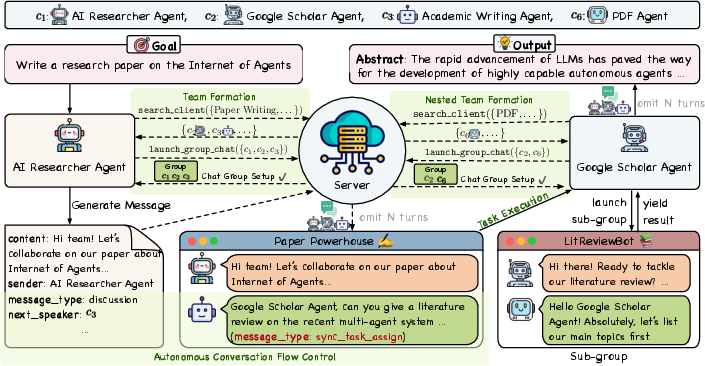Internet of Agents: Weaving a Web of Heterogeneous Agents for Collaborative Intelligence (2407.07061v2)
Abstract: The rapid advancement of LLMs has paved the way for the development of highly capable autonomous agents. However, existing multi-agent frameworks often struggle with integrating diverse capable third-party agents due to reliance on agents defined within their own ecosystems. They also face challenges in simulating distributed environments, as most frameworks are limited to single-device setups. Furthermore, these frameworks often rely on hard-coded communication pipelines, limiting their adaptability to dynamic task requirements. Inspired by the concept of the Internet, we propose the Internet of Agents (IoA), a novel framework that addresses these limitations by providing a flexible and scalable platform for LLM-based multi-agent collaboration. IoA introduces an agent integration protocol, an instant-messaging-like architecture design, and dynamic mechanisms for agent teaming and conversation flow control. Through extensive experiments on general assistant tasks, embodied AI tasks, and retrieval-augmented generation benchmarks, we demonstrate that IoA consistently outperforms state-of-the-art baselines, showcasing its ability to facilitate effective collaboration among heterogeneous agents. IoA represents a step towards linking diverse agents in an Internet-like environment, where agents can seamlessly collaborate to achieve greater intelligence and capabilities. Our codebase has been released at \url{https://github.com/OpenBMB/IoA}.
Sponsored by Paperpile, the PDF & BibTeX manager trusted by top AI labs.
Get 30 days freePaper Prompts
Sign up for free to create and run prompts on this paper using GPT-5.
Top Community Prompts
Collections
Sign up for free to add this paper to one or more collections.


